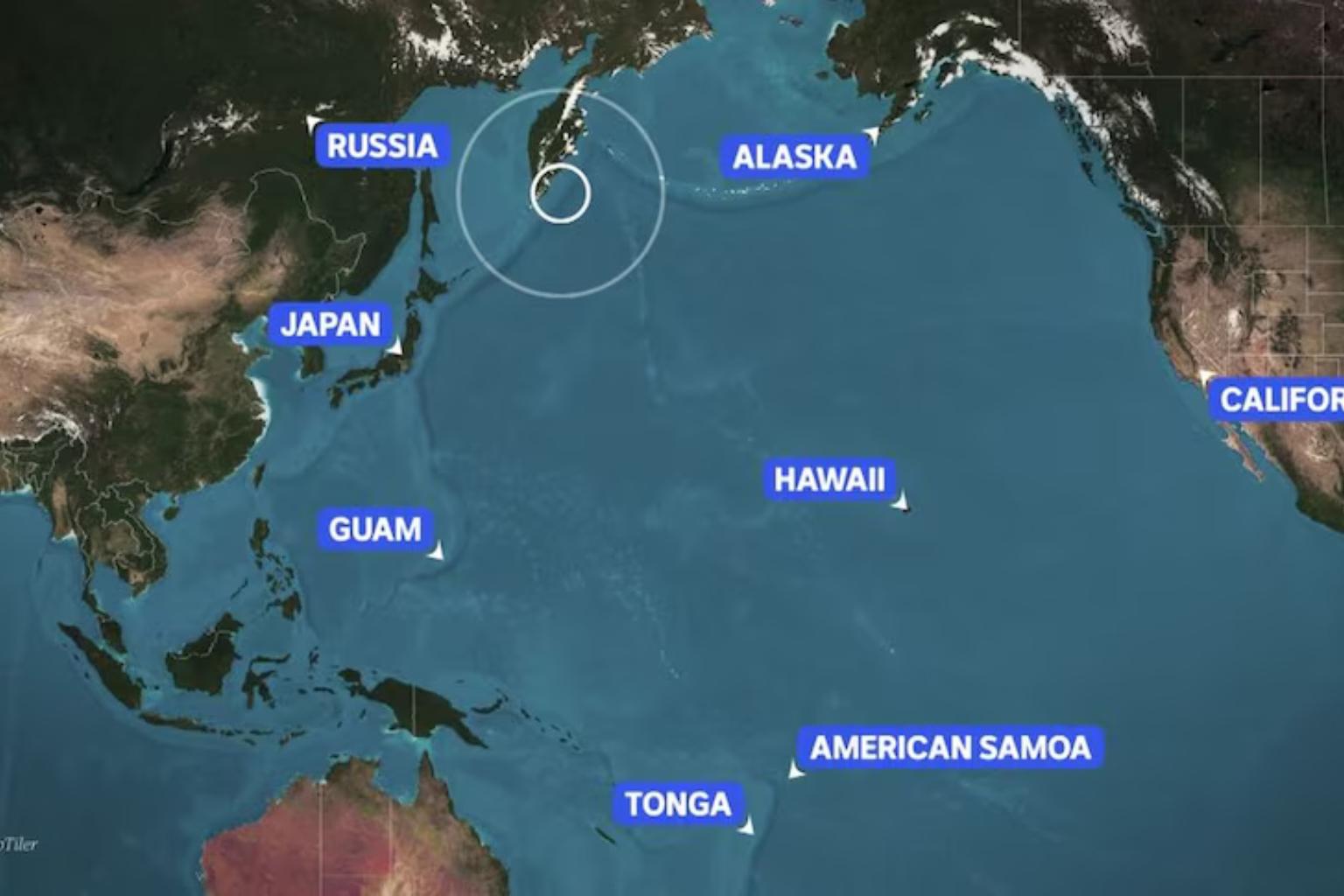Tsunami Alert in Hawaii & Alaska After Strong Earthquake in Russia – LIVE Tracking

In the early hours today, a powerful quake—now being referred to as the Massive Russia Earthquake—struck off the coast of eastern Russia, shaking the Kamchatka Peninsula and setting off tsunami fears across the Pacific. With a magnitude above 7.5, the quake triggered alerts in Hawaii and parts of Alaska, prompting coastal communities to stay on high alert.
🌊 What Happened?
-
A major earthquake hit near the Kamchatka Peninsula, a seismically active area in far eastern Russia.
-
It occurred at a depth of around 40 kilometers, which increases the risk of ocean water displacement and tsunami formation.
-
Authorities quickly sounded alarms across the Pacific region.
🌐 Why Were Hawaii & Alaska Alerted?
As soon as the quake was detected, the Pacific Tsunami Warning Center (PTWC) issued:
-
A tsunami alert for Hawaii
-
A tsunami warning for Alaska
These alerts were based on early data showing the potential for tsunami waves to travel thousands of miles.
People in affected areas were advised to:
-
Stay away from beaches and coastal zones.
-
Monitor updates from official weather services.
-
Get ready for possible evacuation, especially in low-lying areas.
📡 How to Track Tsunami Updates Live
Live tsunami tracking tools are essential during such emergencies. Trusted sources include:
-
PTWC: pacific tsunami alerts
-
USGS: real-time earthquake data
-
Local emergency alert apps and radio broadcasts
These platforms share updated wave arrival times, evacuation zones, and alert status changes.
🏘️ Local Community Response
In both Hawaii and Alaska, residents and officials reacted quickly and cautiously:
-
Schools and public offices reviewed emergency protocols.
-
Evacuation kits were prepared by families living near the shore.
-
Coastal sirens were activated in parts of Hawaii.
-
Alaska volunteers supported elderly residents with transportation and safety information.
“It’s better to prepare and not need it than the other way around,” said an emergency officer in Kodiak.
✅ Tsunami Safety Tips Everyone Should Know
If you're in a tsunami-affected area, keep these tips in mind:
-
Head to higher ground immediately after a warning.
-
Avoid beaches and harbors.
-
Don’t rely on visual confirmation—waves travel faster than you think.
-
Keep a go-bag ready with:
-
Water and snacks
-
Flashlight and batteries
-
Important documents
-
First-aid items and medications
-
-
Stay tuned to radio or trusted apps for real-time alerts.
🔍 Understanding the Bigger Picture
This region in Russia sits on the Pacific "Ring of Fire"—a zone known for earthquakes and volcanic activity. While no major damage has been reported in Russia yet, experts are still assessing the situation.
Today’s event reminds us that:
-
Natural disasters in one country can have ripple effects across continents.
-
Preparedness and early warning systems are vital.
-
Coastal communities should always stay aware and ready.
🌐 Learning from the Past
Though this quake wasn't as severe as past disasters like the 2011 Japan tsunami or the 1964 Alaska earthquake, it reinforces the importance of:
-
Faster alert systems
-
Better public awareness
-
Community-level planning and response
Final Thoughts
Today’s tsunami alert in Hawaii and tsunami warning in Alaska have once again tested our global preparedness for natural disasters. Even though large waves haven't yet reached shore, the situation is a real reminder of how crucial early alerts and local readiness are.
Stay safe. Stay informed. And remember—being alert is always better than being sorry.
- Art
- Causes
- Crafts
- Dance
- Drinks
- Film
- Fitness
- Food
- Juegos
- Gardening
- Health
- Home
- Literature
- Music
- Networking
- Other
- Party
- Religion
- Shopping
- Sports
- Theater
- Wellness
